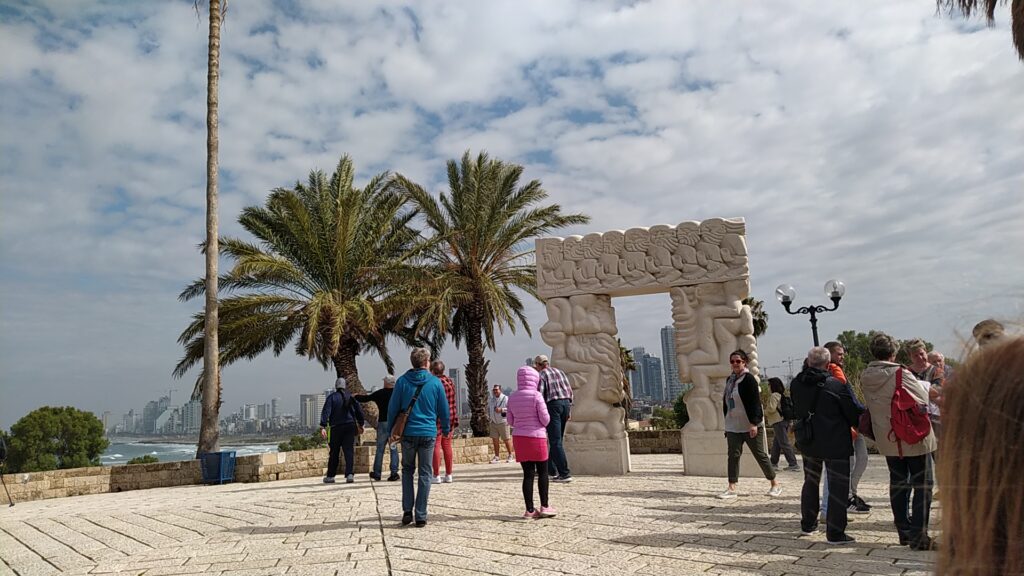The John Paul II Center’s Russell Berrie Cohort XII traveled to Israel last month on a study tour, where they studied Judaism at the Shalom Hartman Institute, visited museums, and saw holy sites of all three monotheistic religions.
Below is a reflection by fellow Father Ny Myo Swe of Myanmar on the fellows’ trip to Jaffa, a city in Israel with much ancient history and traditions.

Jaffa, an ancient city in Israel, is full of artsy people and is one of the world’s oldest ports. It is mentioned in the Bible as the spot from where Jonah embarked before encountering the whale. A port city on the Mediterranean coast, Jaffa is located south of Tel Aviv. It also has many tourist attractions that combine old and new architectures.
So much life and history meet in Jaffa, starting with the clock tower at the foot of the hill to the museum at the top that shows the ancient relics found in the city. We visited St. Peter’s Church, easily the largest and best maintained building in Old Jaffa. This Franciscan church was built over a citadel built by Roman emperor Frederick I. The work was completed in 1894 and renovated in 1903.
The church commemorates the visit and miracle of St. Peter in Jaffa. The majority of Christian churches face east, but this church faces west towards the sea because that is where Peter’s vision appeared. The interior with its high ceiling, stained glass windows, and marble walls are quite similar to European style churches.
Another interesting place is the Wishing Bridge which has 12 bronze plaques, each representing a zodiac symbol. An ancient legend holds that anyone who stands on the bridge, touches their zodiac sign plaque, and looks at the sea will have their wish come true.
The Gate of Faith, a large statue made of Galilee stone, was sculpted by Daniel Kafri of Jerusalem between the years 1973-1975. The statue stands at the top of the HaPisga Garden in Old Jaffa. It is the “gate of entry” into the Land of Israel and represents the promise of the Land to Israel’s Patriarchs; Abraham, Isaac, and Jacob. The top beam represents the realization and depicts the capture of Jericho. The priests surround the city of Jericho, holding horns and are seen carrying the Ark of the Covenant.
The first pillar represented Abraham’s binding of Isaac. Abraham is seen kneeling on the ram and holding up his son Isaac. The second pillar depicts Jacob’s dream, where the land was promised to his offspring. Jacob rests on the land and the stone is under his head. Above him are two angels, one ascending and one descending, facing opposite directions, and the rhythm of the wings creates an association with a ladder.
At Jaffa, archaeologists discovered an Egyptian fortress and a monumental gate from the time of Rameses II. It was found beneath the Rameses gate and was destroyed during Thutmose’s conquest of Jaffa.
Jaffa’s Old City is a great historical place to visit with many interesting sites. It offers multiple art galleries, restaurants, cafes and a variety of culture and entertainment centers.

